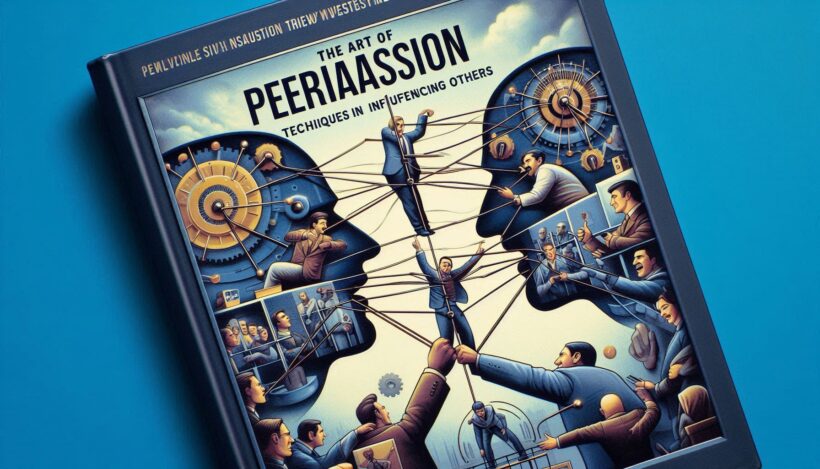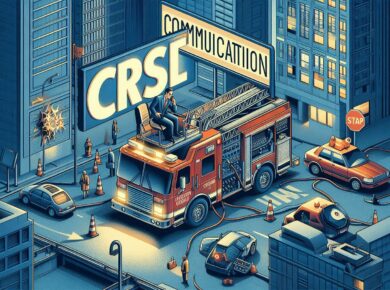Table of Contents
Persuasion is an essential skill that can significantly impact personal and professional relationships. Whether you’re trying to convince a colleague to support your idea, negotiate a better deal, or inspire your team, mastering the art of persuasion can elevate your influence and effectiveness. This article will delve into various techniques for persuading others and how to apply them in different situations.
Understanding Persuasion
Persuasion is more than just convincing someone to agree with you; it’s about guiding them toward a particular perspective or action. At its core, persuasion involves understanding human psychology and leveraging that understanding to communicate effectively.
1. The Importance of Persuasion
Being persuasive is crucial in many aspects of life, including business, relationships, and everyday interactions.
- Building Relationships: Persuasion helps in fostering trust and collaboration by aligning interests.
- Achieving Goals: Whether in sales or project management, the ability to persuade can help achieve desired outcomes.
- Enhancing Communication: Effective persuasion improves overall communication skills, making interactions more impactful.
2. The Psychology of Persuasion
Understanding the psychological principles behind persuasion can enhance your effectiveness.
- Reciprocity: People are more likely to agree to requests if they feel they owe you something.
- Social Proof: Individuals often look to others for cues on how to act, especially in uncertain situations.
- Authority: People tend to follow the advice of credible figures, making it important to establish expertise.
Techniques for Persuasion
There are several techniques you can use to enhance your persuasive abilities. Here are some of the most effective strategies:
1. Build Rapport
Establishing a connection with your audience is fundamental to effective persuasion.
- Find Common Ground: Look for shared interests or experiences to foster a sense of connection.
- Active Listening: Show genuine interest in others’ viewpoints by actively listening and responding thoughtfully.
- Empathy: Understand and acknowledge the feelings and perspectives of others to build trust.
2. Use the Power of Storytelling
Stories are powerful tools for persuasion, as they engage emotions and make messages relatable.
- Personal Stories: Share personal experiences that illustrate your point and resonate with your audience.
- Case Studies: Use real-life examples to demonstrate the effectiveness of your ideas or solutions.
- Visuals: Incorporate images or videos to enhance your storytelling and make it more memorable.
3. Create a Sense of Urgency
Instilling a sense of urgency can motivate others to take action.
- Limited-Time Offers: Use time constraints to encourage quick decisions, such as limited-time promotions or deadlines.
- Highlight Consequences: Emphasize what could be lost or missed out on if action isn’t taken promptly.
- Be Direct: Clearly articulate the need for immediate action to reinforce urgency.
4. Leverage Reciprocity
The principle of reciprocity can significantly influence others’ willingness to comply with your requests.
- Give First: Offer help, support, or valuable information before asking for something in return.
- Follow Up: After providing assistance, follow up with a request to reinforce the feeling of obligation.
- Gifts and Incentives: Small gifts or incentives can create goodwill and prompt favorable responses.
5. Appeal to Emotions
Emotional appeals can be more persuasive than logical arguments alone.
- Identify Emotional Triggers: Understand what motivates your audience emotionally and tailor your message accordingly.
- Use Emotional Language: Incorporate language that evokes feelings, such as joy, fear, or empathy.
- Visual Imagery: Utilize imagery that evokes emotions and reinforces your message.
Practical Applications of Persuasion Techniques
Persuasion techniques can be applied across various contexts, from personal interactions to professional settings.
1. In the Workplace
Effective persuasion can lead to better collaboration and decision-making.
- Presenting Ideas: When pitching ideas, use storytelling and emotional appeals to capture attention and gain buy-in.
- Negotiation: Employ reciprocity and urgency to create favorable negotiation outcomes.
- Team Leadership: Inspire and motivate team members by appealing to shared goals and values.
2. In Sales and Marketing
Persuasion is at the heart of successful sales and marketing strategies.
- Customer Engagement: Use emotional storytelling to connect with customers and make your product relatable.
- Promotions: Create urgency in marketing campaigns through limited-time offers and compelling calls to action.
- Social Proof: Highlight testimonials and case studies to build credibility and trust with potential customers.
3. In Everyday Life
Persuasion techniques can enhance personal relationships and social interactions.
- Influencing Friends and Family: Use empathy and rapport-building to persuade loved ones on important decisions.
- Community Engagement: Foster community involvement by appealing to shared values and collective benefits.
- Conflict Resolution: Apply active listening and emotional appeals to mediate conflicts and find common ground.
Conclusion
The art of persuasion is a powerful skill that can enhance your ability to influence others in various aspects of life. By understanding the principles of persuasion and applying techniques such as building rapport, storytelling, and leveraging emotional appeals, you can become a more effective communicator and leader. Whether in the workplace, in sales, or in personal relationships, mastering these skills will help you achieve your goals and foster meaningful connections. Remember, persuasion is not just about getting what you want; it’s about building relationships and creating a positive impact on those around you.






